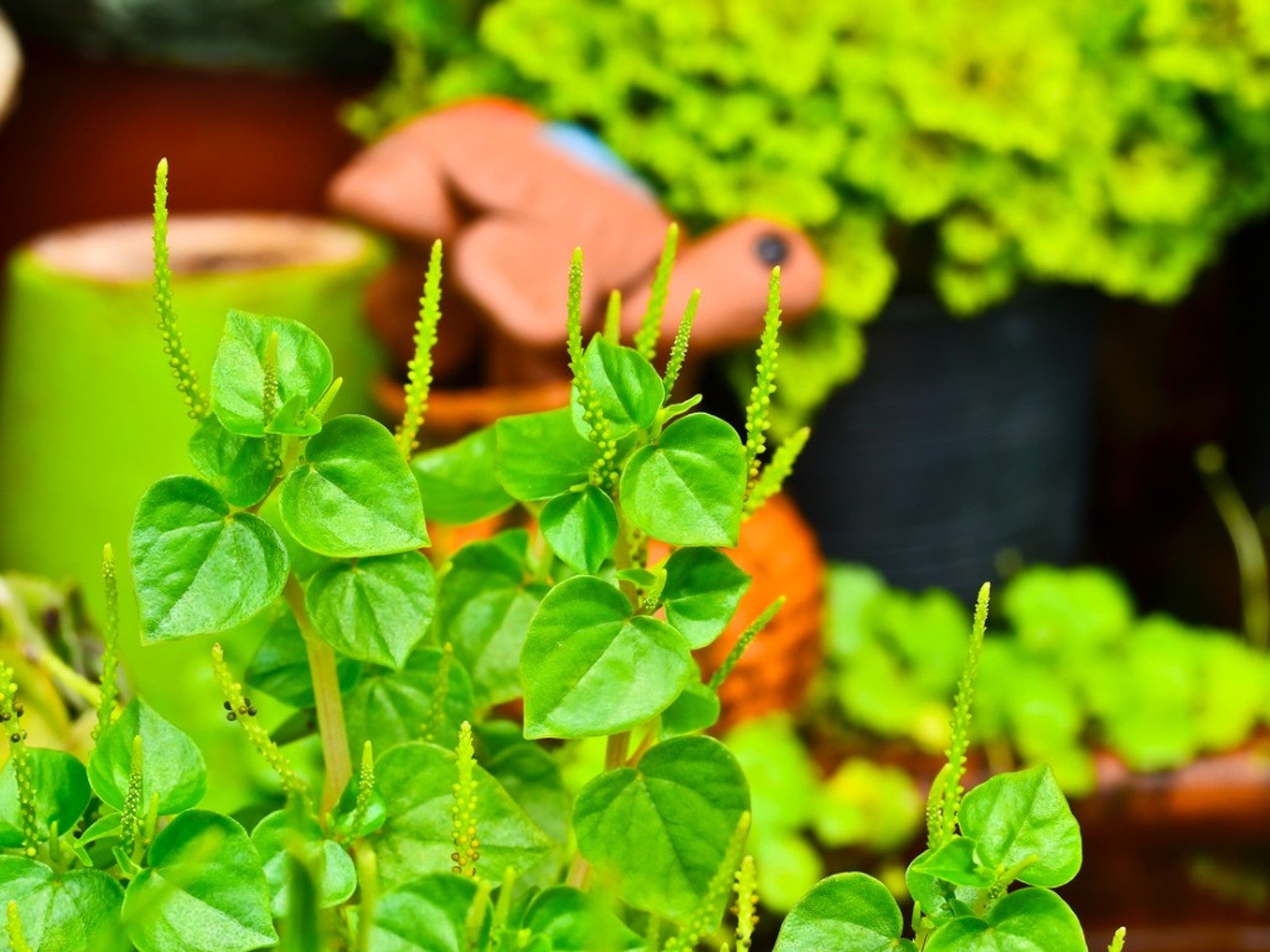How To Grow Peperomia Pellucida Plants

The Peperomia pellucida plant is a short lived perennial that is native to Mexico, Central and South America, the West Indies and other tropical climates or has become naturalized in the southeastern U.S. and Hawaii. Categorized as a weed in some regions and in others as an herb, P. pellucida -- also known as ‘pepper elder’ or ‘rat ears’ plant -- has proven to be a remarkable antibacterial with the potential for a broad spectrum antibiotic. Read on to learn about Peperomia pellucida care and growth.
Pepper Elder Seeds
The plant does flower year-round, although blooms are inconspicuous light green to pale green spikes. These mature to reveal tiny dot-like seeds attached to the flower spikes. Pepper elder has a strong mustard-like aroma.
P. pellucida, in the family Piperaceae, is a low growing plant of about 6-18 inches (15-45 cm) in height. Its habit is erect to partially draping. Rat ears plant has plentiful, glossy green, and heart shaped foliage that is somewhat fleshy like a succulent.
Depending upon the climate, pepper elder may be a tender perennial to annual. Growing in clumps, P. pellucida thrives in loose, humid soil, shaded woodlands, and along coastal plains.
Besides the two common names listed above, P. pellucida may be called ‘shining bush’ plant or ‘crab claw’ plant.
Medicinal Uses for P. pellucida
Pepper elder leaves are harvested for use as food, tea or medicine. Some cultures harvest wild leaves while still others cultivate the plant and even sell it in local markets. Medicinally the plant is used to treat abdominal pain, abscesses, boils, colic, fatigue, gout, headache, kidney related diseases, and joint pain. Roots may be used to treat fever.
Specifically in northeastern Brazil the plant is used to lower cholesterol, while in Bolivia, the Alteños people use the entire plant to stop hemorrhaging. In the Amazon and Guyana, rat ears plant is used to suppress cough, as an emollient and diuretic. In the Philippines it is one of 10 medicinal plants endorsed by the Department of Health.
Sign up for the Gardening Know How newsletter today and receive a free copy of our e-book "How to Grow Delicious Tomatoes".
Testing for potential pharmaceutical uses has shown anti-inflammatory and analgesic properties. P. pellucida has also been shown to have antibacterial properties with respect to Cadillus subtillis, Pseudomonas aeruginosa, and Escherichia coli -- flagging it as a potential broad spectrum antibiotic.
Asthma-like symptoms have been observed in people with known hypersensitivity reactions to the species. That said, no data supports human toxicity.
Culinary Uses for P. pellucida
Peperomia is often cooked down into soups or stews or braised. The leaves and stems are also eaten fresh in salads, imparting a mild mustard-like flavor. A type of tea is also made from the leaves of the plant.
How to Grow Peperomia pellucida
Harvest seeds in the summer or fall and then start them indoors. Cover the container with plastic to increase the temperature and humidity. Seeds should germinate in 3 days to 3 weeks.
Peperomia will grow in USDA zones 9b-11 or indoors as a houseplant. It can be grown outdoors in Florida, Alabama, Mississippi and Texas. A popular way to grow the plant is in coco coir and peat moss, but you may also use a potting mix that is moisture retentive yet airy.
If growing it indoors, choose a bright window but not one that is in direct sun. South or east exposure is best. Temperatures should be 65-80 F. (18-27 C.) Plants will die if temperatures dip below 50 F. (10 C.) Peperomia requires plenty of humidity, above 60%. Growing it on an evaporative tray of pebbles, pumice or the like can help to raise the humidity level while preventing bacterial or fungal diseases.
Peperomia pellucida Care
Pepper elder plants like moist but not saturated soil. During the dormant season of the plant you may only need to water once a month. Otherwise, note warning signs such as drooping or curling leaves as indicators when to water. Stick your finger into the soil to the first knuckle. If it is dry, water the plant.
The roots of this plant are small and will likely not need to be repotted for years. In fact, you will more likely simply be replacing soil rather than increasing pot size. If you do need to repot your plant, the ideal time to do so is in the winter or spring.
Fertilize with a diluted fish emulsion or synthetic fertilizer. If you are growing the plant for food be sure to use an organic fertilizer. You can also add a time release fertilizer at the time of planting which will feed the plant for about six months.

Amy Grant has been gardening for 30 years and writing for 15. A professional chef and caterer, Amy's area of expertise is culinary gardening.
